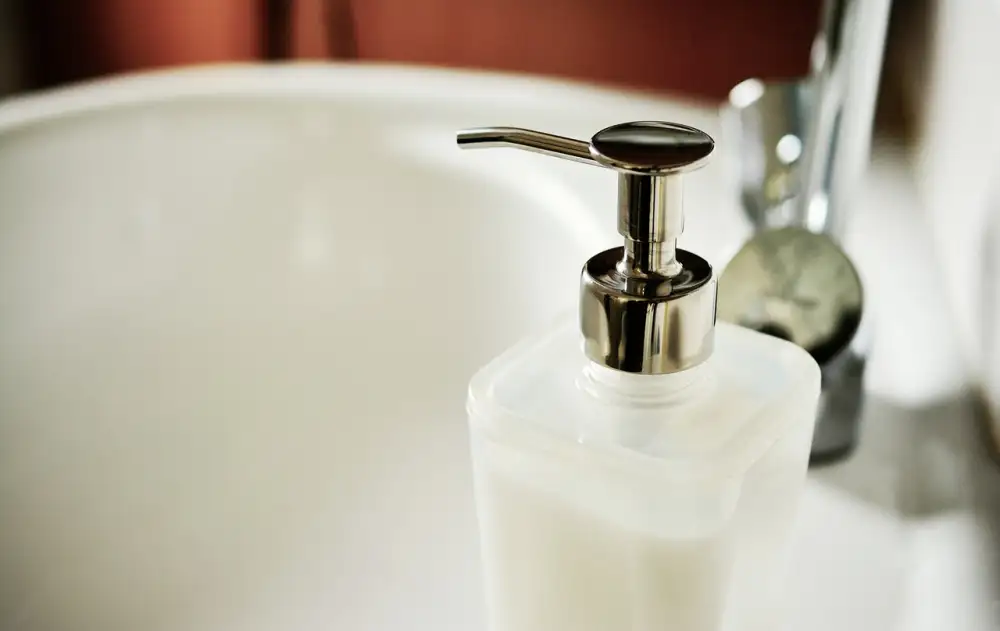Rust Be Gone: Master the Art of Cleaning a Rusty Cast Iron Skillet at Home

- Gather the necessary supplies for cleaning
- Step 1: Scrub the skillet with coarse salt
- Step 2: Create a paste with baking soda and water
- Step 3: Apply the paste to the skillet and let it sit
- Step 4: Scrub the skillet with a scrub brush or sponge
- Step 5: Rinse the skillet thoroughly
- Step 6: Dry the skillet completely
- Step 7: Season the skillet to prevent future rust
A rusty cast iron skillet may seem like a lost cause, but with the right techniques, you can restore it to its former glory. Cleaning a rusty cast iron skillet is essential not only for aesthetic reasons but also for maintaining its functionality and prolonging its lifespan. Rust can compromise the integrity of the skillet, making it less effective at conducting heat evenly. Moreover, consuming rust particles can be harmful to your health. Therefore, it is crucial to master the art of cleaning a rusty cast iron skillet at home. With a little effort and the right supplies, you can transform your neglected skillet into a kitchen staple once again. So let's dive in and learn how to banish rust from your beloved cast iron skillet!
Gather the necessary supplies for cleaning
Gathering the necessary supplies for cleaning your rusty cast iron skillet is essential to ensure a successful restoration. Here's what you'll need:
1. Coarse salt: This will act as an abrasive to help remove the rust.
2. Baking soda: Its alkaline properties make it effective in breaking down rust.
3. Water: You'll need water to create a paste with the baking soda.
4. Scrub brush or sponge: Choose a brush or sponge with firm bristles to scrub away the rust.
5. Paper towels or cloth: These will be used for drying the skillet.
6. Cooking oil or shortening: This will be used for seasoning the skillet after cleaning.
Having these supplies ready before you start will make the cleaning process smoother and more efficient, ensuring that you can restore your cast iron skillet to its former glory.
Step 1: Scrub the skillet with coarse salt
To begin the process of cleaning your rusty cast iron skillet, you'll need to gather a few supplies. First and foremost, grab a box of coarse salt. The abrasive texture of the salt will help to remove the rust without damaging the surface of the skillet.
Start by sprinkling a generous amount of coarse salt onto the rusty areas of the skillet. Make sure to cover all the affected areas thoroughly. Then, take a damp cloth or sponge and begin scrubbing the salt into the rusted spots. Apply some pressure while scrubbing to effectively remove the rust.
Continue scrubbing until you notice that the rust is starting to come off. You may need to add more salt as you go along if it gets absorbed or becomes less effective. The coarse salt acts as a natural abrasive, gently lifting away the rust from the surface of your skillet.
Once you're satisfied with your scrubbing efforts, rinse off any remaining salt residue from both sides of the skillet under warm running water. Make sure to remove all traces of salt before moving on to the next step.
By following this first step, you're well on your way to restoring your rusty cast iron skillet back to its former glory!
Step 2: Create a paste with baking soda and water
Once you have scrubbed off the loose rust with coarse salt, it's time to create a powerful cleaning paste using baking soda and water. Baking soda is known for its gentle yet effective cleaning properties, making it perfect for removing rust from your cast iron skillet.
To create the paste, simply mix equal parts of baking soda and water in a small bowl. Stir until you achieve a thick consistency that can easily be spread onto the skillet. The alkaline nature of baking soda helps break down the rust while being safe for your cookware.
This paste acts as an abrasive cleaner that will further loosen any remaining rust particles on the surface of your skillet. It also helps neutralize any acidic residue left behind by the salt scrubbing process.
By using this homemade paste, you avoid harsh chemicals that may damage your cast iron skillet or leave behind unwanted odors. Plus, it's an eco-friendly alternative that won't harm the environment.
Now that you have your baking soda and water paste ready, let's move on to step 3: applying the paste to the skillet and letting it sit for optimal results.
Step 3: Apply the paste to the skillet and let it sit
Once you have created a paste with baking soda and water, it's time to apply it to the rusty areas of your cast iron skillet. Using a spoon or your fingers, spread a thick layer of the paste onto the affected areas. Make sure to cover all the rust spots evenly.
After applying the paste, allow it to sit on the skillet for at least 30 minutes. This will give the baking soda enough time to work its magic and loosen up the rust. You may even leave it overnight for stubborn rust stains.
During this waiting period, you can take this opportunity to clean other kitchen utensils or prepare other ingredients for your next meal. Just make sure not to forget about your cast iron skillet!
Remember, patience is key when dealing with rust removal. Allowing the paste to sit ensures that it penetrates deep into the rust and makes it easier to remove in the next step.
So go ahead and let that paste do its job while you attend to other tasks.
Step 4: Scrub the skillet with a scrub brush or sponge
Step 4: Scrub the skillet with a scrub brush or sponge. Once the paste has had time to sit on the skillet and work its magic, it's time to give it a good scrub. Using a scrub brush or sponge, vigorously scrub the surface of the skillet in circular motions. Pay extra attention to any stubborn rust spots or residue. The abrasive texture of the brush or sponge will help remove any remaining rust particles and lift away any dirt or grime that may have accumulated over time. Be sure to cover all areas of the skillet, including the handle and sides. Keep scrubbing until you are satisfied that the skillet is clean and free from rust.
Step 5: Rinse the skillet thoroughly
Step 5: Rinse the skillet thoroughly. After scrubbing off the paste, it's important to rinse the skillet with warm water to remove any remaining residue. Make sure to rinse both the inside and outside of the skillet, ensuring that all traces of the paste are gone. Use your hands or a gentle stream of water to ensure thorough rinsing. Avoid using soap as it can strip away the seasoning on your skillet. Once rinsed, inspect the skillet for any lingering rust spots or residue before moving on to the next step.
Step 6: Dry the skillet completely
After rinsing off the baking soda paste, it is crucial to dry the skillet thoroughly to prevent any moisture from causing rust. Use a clean towel or paper towels to wipe away any remaining water droplets. Make sure to reach all the corners and crevices of the skillet.
Next, place the skillet on a stovetop burner set to low heat. Allow the residual heat to evaporate any remaining moisture for a few minutes. This step ensures that every last bit of water is removed.
Alternatively, you can also place the skillet in a preheated oven at a low temperature, around 200°F (93°C), for about 10-15 minutes. This gentle heat will aid in drying out the skillet completely.
Remember, even a small amount of moisture left behind can lead to rust formation, so take your time with this step and ensure that the skillet is completely dry before moving on to the next step.
By following these instructions and taking care during each step, you'll be well on your way to restoring your rusty cast iron skillet back to its former glory.
Step 7: Season the skillet to prevent future rust
After successfully cleaning and restoring your rusty cast iron skillet, it's important to season it properly to protect it from future rust. Seasoning creates a protective layer on the surface of the skillet, preventing moisture from coming into contact with the iron and causing rust.
To season your skillet, start by preheating your oven to 350°F (175°C). Next, apply a thin layer of vegetable oil or melted shortening all over the skillet, including the handle. Make sure to coat both the inside and outside surfaces.
Place the oiled skillet upside down on the middle rack of your oven. This will allow any excess oil to drip off while it bakes. To catch any drips, place a foil-lined baking sheet on the lower rack.
Bake the skillet for one hour, then turn off the oven and let it cool completely inside before removing. The heat will help bond the oil to the iron, creating a smooth and non-stick surface.
Once cooled, your cast iron skillet is now seasoned and ready for use. Remember to always hand wash your skillet with minimal soap and water after each use, avoiding harsh scrubbing that could remove the seasoning.
By following these steps and maintaining proper seasoning, you can enjoy cooking with your restored cast iron skillet for years to come without worrying about rust. Happy cooking!
Now that you have successfully cleaned and restored your rusty cast iron skillet, it's time to reap the rewards of your hard work. With proper care and maintenance, your skillet will continue to serve you for years to come.
Remember to always dry your skillet thoroughly after each use to prevent any moisture from causing rust. Additionally, make sure to season your skillet regularly by applying a thin coat of oil and heating it on low heat. This will help create a protective layer that prevents rust from forming.
With a well-maintained cast iron skillet, you can now confidently cook up delicious meals with enhanced flavor and even heat distribution. Whether it's searing steaks, baking cornbread, or sautéing vegetables, your restored skillet is ready to elevate your culinary adventures.
So go ahead, savor the flavors and explore the world of cooking with your newly revived cast iron skillet. Happy cooking!
Published: 29. 12. 2023
Category: Home



